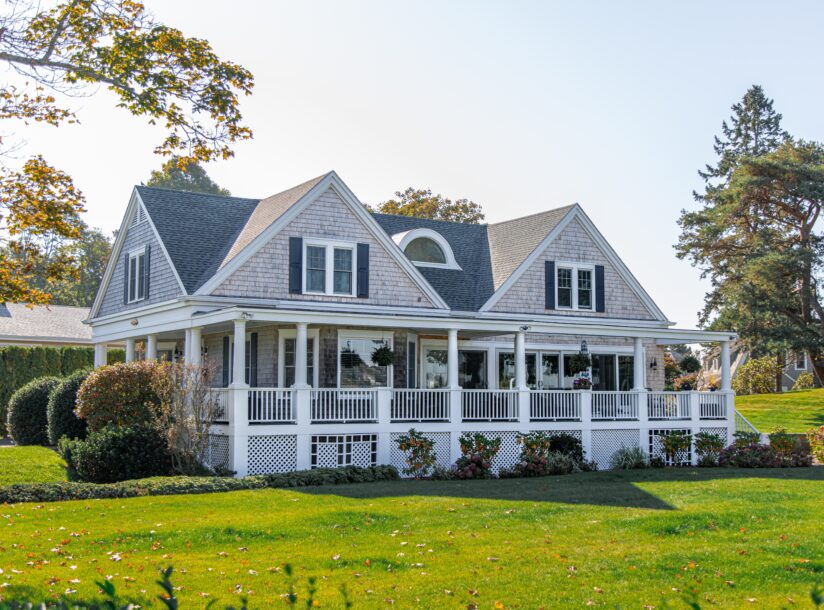Renting vs. Selling? Know the Tax Differences Converting a Property for Sale to a Rental Property – Capital Costs and Deductible Expenses

Maybe this sounds familiar: you’ve built a property with the intention to sell. When the property is finished, the market isn’t where you need it to be or you’ve overspent on your construction. Now you’ve decided to rent out the property and earn rental income instead.
What would change for you, tax wise, when you decide to rent out the property? You know you need to report the rental income; what you may not know: some of the costs you’ve been capitalizing can now be deducted to offset your rental income generated. In this blog, we’ll outline the treatment of a few common items during construction and after the property is available for rent. Our blog assumes a corporate structure and does not cover the impact of change of use rules in tax.
Before we dive in, it’s important to discuss the below items with your Smythe real estate advisor. There could be very subtle differences that could be changed in the agreements in order to maximize tax benefits.
CAPITALIZED COSTS REPAIR AND MAINTENANCE COSTS
Cost of constructions are almost always capitalized before the property is completed. This means that during the development and construction phase, all material and labour costs associated with the construction are capitalized to be part of the overall cost of the property. This will remain the same up to the point that the building is available for use or converted to a rental property.
After the property is available for use and for rental, costs are generally separated into two categories: capitalized costs and repairs & maintenance costs.
- Generally, capitalized costs include costs that significantly improves the function or value of the property. These costs will be capitalized to increase the cost base of the building and become the new base for “Capital Cost Allowance” or also known as depreciation for tax purposes (to be covered below).
- Repairs and maintenance costs are costs incurred to maintain the property and some examples are janitorial, general repairs, and graffiti removal. At times, replacement of existing parts of the property (roof, floor, HVAC, windows, etc.) could be considered repair and maintenance. Repairs are usually intended to maintain the property’s existing status, ensure its livability, or to comply with regulatory standards. Costs associated with repair and maintenance should be expensed and deducted for income tax purposes in the year that they’re incurred. There is always bias to want to deduct your expenses. However with larger replacement costs, professional judgement is required as the line is not always clear.
INTEREST / FINANCING FEES
Most developers and builders leverage their own existing properties to finance the purchase or construction of a new property. The interest incurred is generally capitalized to the cost base of the new property during development and construction. After the property is available for rental, interest can be expensed as paid.
Any financing fees incurred are generally amortized over five years for income tax purposes. Amortized portion of the financing fees are capitalized as the cost base of the property during construction. After converting the property to rental, amortized portion of the financing fees should be expensed.
PROPERTY TAXES, LICENSES, INSURANCE
Property taxes, licenses, insurance are generally capitalized during the construction phase. After the property is used for rental, they will be expensed as incurred.
MANAGEMENT FEES
The treatment of management fees needs to be assessed by the nature of the expenses. Often times, separate management agreements would be established for project development and rental management. Management fees associated with project development should be capitalized, whereas management fees related to rental operations should be expensed.
PROFESSIONAL FEES AND MARKETING
Although many of the costs have different treatments before and after the property is converted to rental, there’re also a few that maintain the same treatment.
- Professional fees are almost always expensed unless it’s specifically related to the development project. This means legal fees related to corporate filings, bookkeeping fees, tax filing costs and generally expensed before and after the construction phase.
- Marketing costs should be expensed as incurred before and after the construction phase, unless it meets the criteria of prepaid expenses, deferred charges, or other fixed assets.
CAPITAL COST ALLOWANCE (“CCA”)
When a property is available for rental, CCA (or known as depreciation for tax purposes) can be deducted each year, based on a rate set by the Canada Revenue Agency (“CRA”). Different properties and different types of assets are categorized into different classes, and are allowed different depreciation rates each year. CCA are calculated using declining balance method.
Claiming CCA is optional. It allows owners to deduct a portion of the cost of their asset for tax purposes, to reduce their taxable income. However, not every client deducts CCA as there are other factors to consider. One example would be if the property is sold at a price higher than its original cost, all previously claimed CCA would be added back as taxable income (known as recapture), and included as income at the year of sale.
It should be noted that CCA cannot be claimed to increase a rental loss.
The table below shows some commonly used CCA Classes and their CCA rates. The list is non-exhaustive and should be used as reference only. Stay tuned for our upcoming article which will break down different Class 1 buildings and their CCA rates in detail!
| Class | CCA Rate | Descriptions |
| 1 | 4%/6% | Most buildings bought and built in recent years will be categorized in Class 1. This means if the total cost of the building when it’s available for use equal to $1,000,000, $40,000 of CCA can be deducted for income tax purposes in the first year (ignoring half-year rule). For certain non-residential properties, an election can be filed to increase CCA rate from 4% to 6%. |
| 8 | 20% | Most furniture and fixtures, including construction / office equipment owned by the business |
| 10/10.1 | 30% | Motor vehicles and passenger vehicles owned by the business will be categorized as Class 10. Passenger vehicles with a cost over $30,000 plus sales tax will be categorized as Class 10.1. For Class 10.1 passenger vehicles, only $30,000 will be considered cost based for CCA (i.e. for a passenger vehicle that costs $50,000, CCA for the first year would be $30,000 (cost base limit) * 30% = $9,000). |
| 50 | 55% | Most computer hardware purchased in recent years |
BUSINESS INCOME VS. CAPITAL GAIN
When a property is intended to be sold and used to generate sales proceeds, the profits from a sale may be considered business income and could be 100% taxable. For rental properties, the property could also be considered a capital property which would result in a capital gain. One of the benefits of capital gains compared to business income is that 50% of the gain is included as taxable income.
The above are some considerations to help you maximize deductions for your rental properties, reduce income taxes and improve cash flow. It’s important to note that tax planning should be considered from both short-term and long-term perspective. Every client situation is unique and you should always consult with your Smythe advisors.
Sherry Shi is a manager in the Real Estate and Construction Group at Smythe LLP. Smythe LLP is one of the leaders in accounting and tax advisory services in the real estate and construction industries in BC. For further information, contact us at 604.687.1231 or visit smythecpa.com.
The information provided is a general overview and it should not be relied upon by readers. The information should not be construed as tax advice. We recommend seeking professional advice from your tax advisor in respect of your specific situation.


